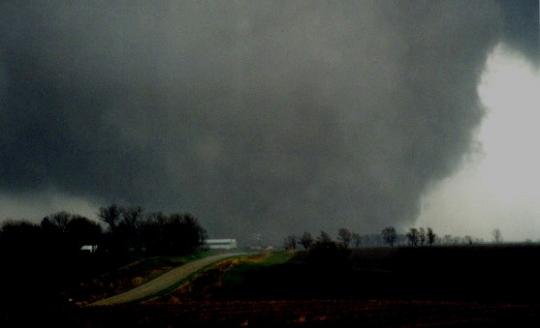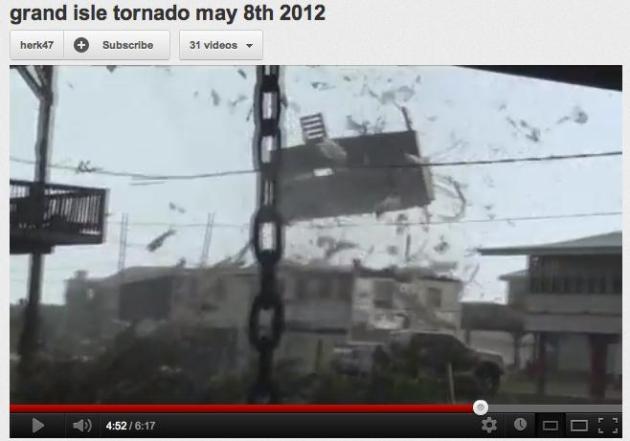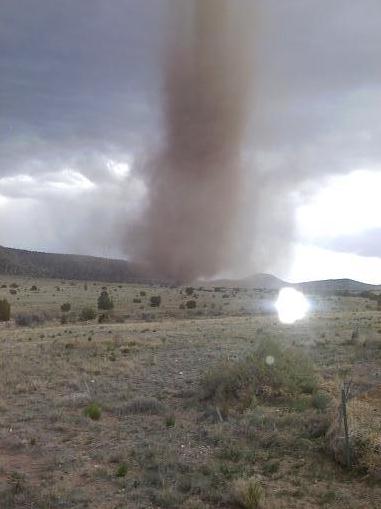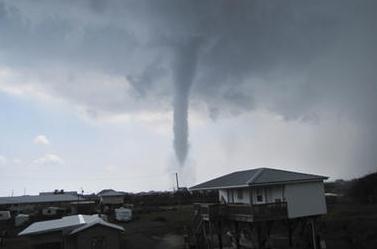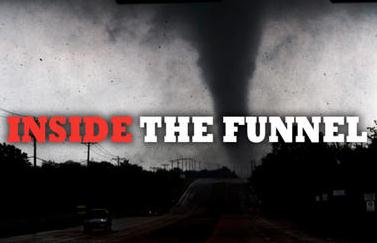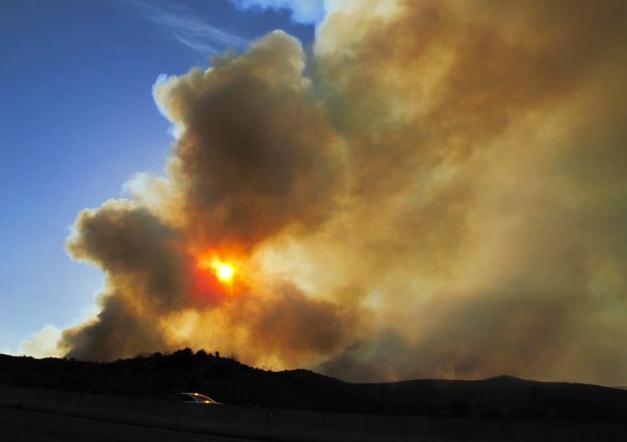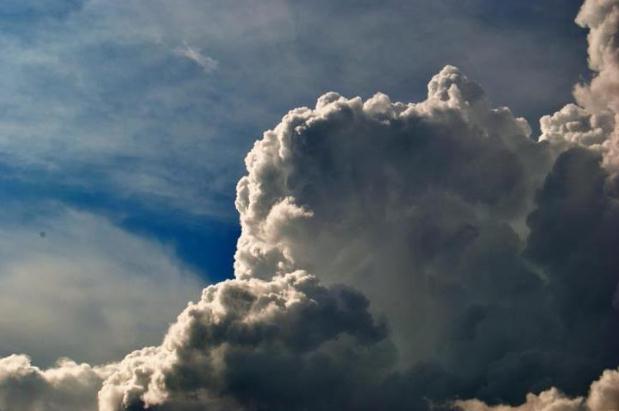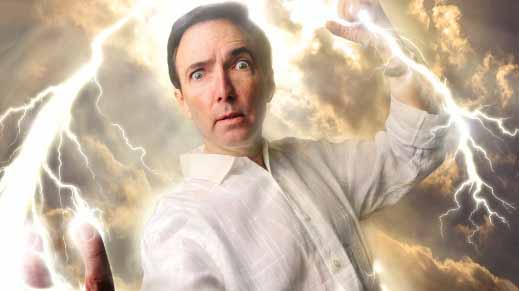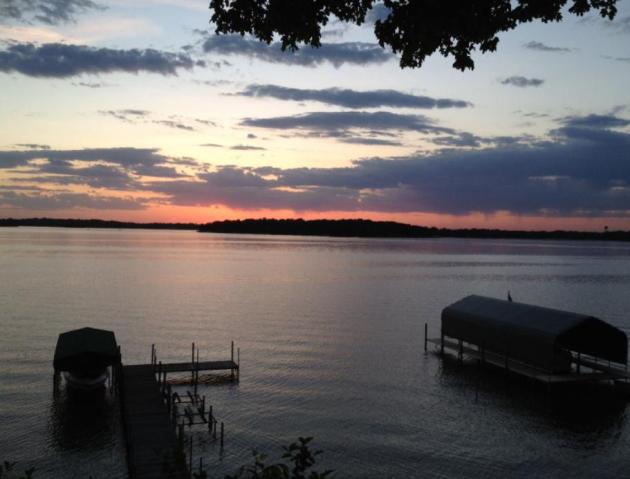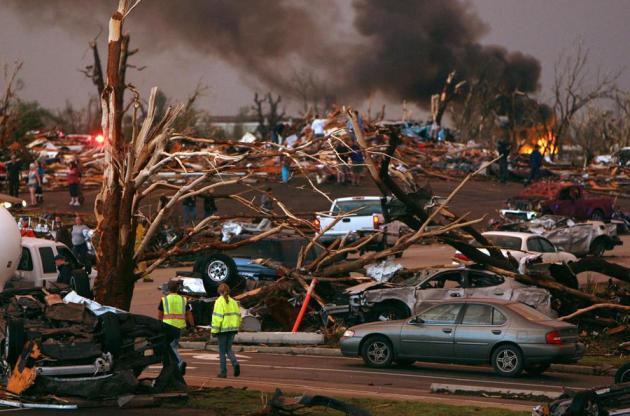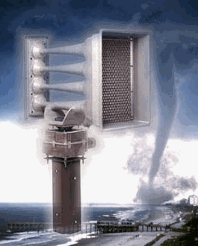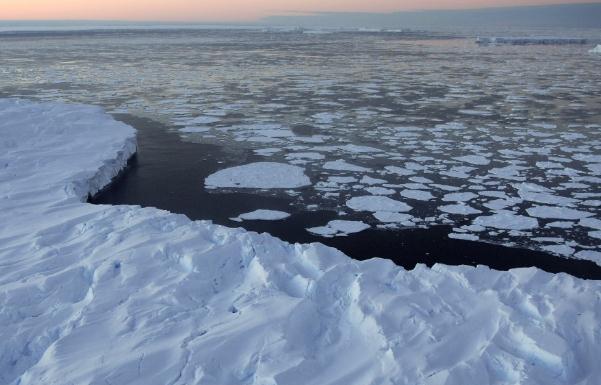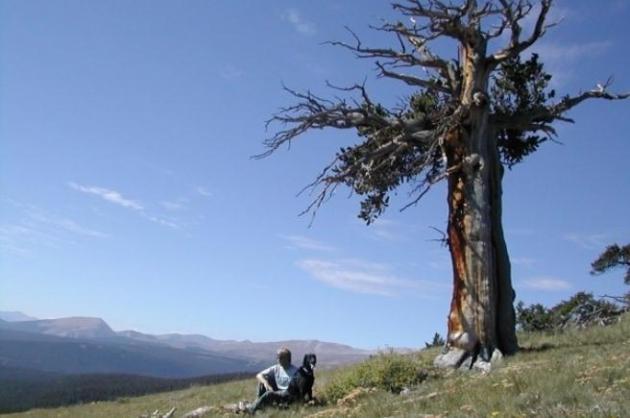"
Don't look for your dreams to come true; look to become true to your dreams." - Michael Beckwith
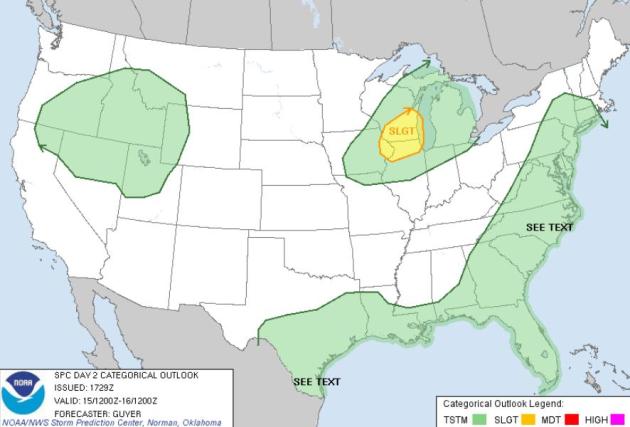 Tuesday Severe Threat
Tuesday Severe Threat.
A weak clipper-like intrusion of Canadian air may spark a few strong to
severe storms from Madison to Milwaukee, Rockford and Chicago later
today. Map courtesy of
SPC.
"
Research at Texas Tech University
and elsewhere has shown that only masonry or reinforced concrete walls
can protect against lethal flying debris that might be encountered
during a tornado with wind speeds up to 130 mph." from a Houston Chronicle story below.
"
The best guess now is that a worst-case rise of 2 feet is no
longer in the cards. The likely increase in sea level by 2100 now
stands at 3 feet, with worst-case scenarios going as high as 6 feet.
Three feet would threaten many coastal cities around the world with
frequent, powerful floods, as the mildest of storms could send water
coursing through streets and into buildings. Six feet could make large
parts of major cities — Miami, New Orleans, Shanghai, Bangkok and many
more — essentially uninhabitable." - from a Climate Central article; details below.
Least Polluted Cities In The U.S. Ranked In State Of The Air 2012. Duluth came in at #19. Way to represent! Here's a story from
Huffington Post: "
Are you and your neighbors breathing healthy air? American Lung Association has released their State Of The Air 2012 report,
detailing cities with the least and most air pollution in America.
Each city is ranked by ozone pollution, short-term particle pollution,
and year-long particle pollution. Below are the report's "Top 25 Least
Polluted Cities By Year-Round Particle Pollution." Although many
problem regions still exist, the report shows that all but three of the
most ozone-polluted cities improved air quality, and over 50% of the
worst smog-makers were having their best year thus far."
Photo credit above:
Flickr image courtesy of kla4067
 Fun Weather Fact
Fun Weather Fact: The windiest place in the world is Port Martin,
Antarctica, which has an average wind speed over a year of 64 km/h (40
mph). It experiences gale force 8 winds (39-46 mph) for over a hundred
days a year! Credit:
Facebook and the Marquette, Michigan office of The National Weather Service.
Must-See Tornado Video. This is definitely worth a
couple minutes of your time: "Last week a waterspout came ashore in
Grand Isle, Louisiana causing damage. CAPT. KEITH “HERK” BERGERON
captured this amazing video. It gets extremely intense about 4:35 in.
You actually see a house get blown apart. Thankfully, Capt. Bergeron
wasn’t injured getting this footage.
Click here to watch the video. "
Rare New Mexico Twister. From a relative risk
argument, you could make the case that New Mexico is one of the safest
states in the USA: no hurricanes or earthquakes, few floods, tornadoes
are exceedingly rare (due to drier desert air nearby). But there are
exceptions to every rule: "
Sunday afternoon a tornado touched down
in the mountain village of Magdalena, New Mexico. Check out this
incredible photo from Mark Ronchetti, Chief Meteorologist KRQE News 13
& KASA Fox 2 Albuquerque shared by the National Weather Service Southern Region HQ on Facebook."
Riding The Whirlwind. Here's an excerpt of a terrific story about the scientific implications of "tornado chasing" at
The Christian Science Monitor: "...
The
people who study them – and whose important work ultimately pays off
in ways ranging from improved storm-warning times to better
home-building techniques – have their own lexicon. They talk about "wall
clouds" and "hook echoes." And because they can learn just so much by
peering at a computer monitor, they go out into the field. They go in
pursuit. For this week's cover story, veteran Monitor science writer
Pete Spotts immersed himself in the highly collaborative culture of
responsible funnel hunters, riding with Kiel Ortega from NOAA's National Severe Storms Laboratory in Norman, Okla."
Photo credit above: "
In this photo from NOAA, what is believed to be a tornado is seen touching down in Grand Isle, La., Wednesday, May 9." Courtesy of Tim Osborn/NOAA/AP
CSI Tornado: Decoding - And Chasing - Supercells With The Experts.
The Christian Science Monitor
is on a tornadic roll - here's a second excellent story focusing on
finding the atmospheric equivalent of a needle in a haystack: zeroing in
on the spinning "supercell" thunderstorm capable of spinning up a
large, violent tornado: "
Forecasters had seen it coming for days – an angry blob of bright pink blossoming on forecast maps over a nearly 175,000-square-mile area of the Great Plains. For only the second time in its history, the National Weather Service held a pre-outbreak press conference Friday, April 13, alerting the region – much as it does for hurricanes ahead of landfall – to brace itself. Conditions were ripe for a significant tornado outbreak."
Photo credit above: "
CSI Tornado: Decoding – and chasing –
supercells with the experts. This is the weekly cover story of the May
14 issue of The Christian Science MonitorWeekly." Credit: Parrish Velasco/The Dallas Morning News/AP
Building Materials Are Key To Limiting Storm Deaths.
Building a truly "tornado-proof" home is cost-prohibitive, but stronger
building codes can help to limit damage and reduce the risk of injury
and death. Here's an article from
The Houston Chronicle: "
The
images have become all too familiar: houses and communities turned
into piles of giant toothpicks by fierce tornadoes. Much of this kind
of damage can be prevented by enacting stronger building standards. The
first week of March had an unprecedented 440 tornado warnings issued,
and severe storms contributed to the deaths of 39 people in five
states. A perfect blend of energy and turbulent winds has already made
2012 an especially active, and deadly, year for tornadoes. In early
April, tornadoes tore through the Dallas-Fort Worth area and caused as
much as $500 million in insured damage, according to the Southwestern Insurance Information Service."
Disaster Safety And "Safe Rooms". Here's some useful information from
marketwatch.com: "
It
is a myth that nothing can be done to protect you and your family from
tornadoes. In fact, a properly built, high-wind, safe room can protect
from the most intense tornadoes, hurricanes and similar natural
disasters. The truth about safe rooms: Safe rooms can be designed to
withstand winds up to 250 miles per hour, offering safe refuge for
families in the path of high-wind events. A closet, bathroom, laundry
area or storage room can be enhanced to serve as a safe room. Safe rooms
designed to meet standards set forth by the National Storm Shelter
Association, the International Code Council and FEMA will stand up to
the most intense tornadoes and hurricanes."
Extreme-Weather Text Alerts Set To Begin. Details from
The Detroit Free Press: "
Wireless
carriers and the federal government are launching a system to
automatically warn people of dangerous weather and other emergencies
via a special type of text messaging to cellphones. The Wireless
Emergency Alerts (WEA) service, which begins this month, is free, and
consumers won't have to sign up. Warnings will be location-based: If
you're traveling, you'll get an alert for whatever emergency is
happening where you are. "Wireless carriers representing more than 97%
of subscribers voluntarily agreed to develop and offer free,
geographically targeted wireless emergency alerts," said Amy Storey,
spokeswoman for the CTIA— The Wireless Association. AT&T, Cellcom,
Cricket, Sprint Nextel, T-Mobile, U.S. Cellular and Verizon Wireless
are participating."
5 Deadliest Hurricanes Wreaked Havoc. Here's a great hurricane history lesson from
KXLY.com: "
Hurricane
season starts June 1 of every year and ends on Nov 30 of every year,
with an average of 5.9 hurricanes forming in the Atlantic Ocean each
year.Hurricanes that cause extreme destruction are rare, but when they
do occur, they can cause significant property damage and/or thousands of
fatalities. Below are the five deadliest known Atlantic hurricanes."
Great Hurricane of 1780
"
The deadliest Atlantic hurricane on record is the Great
Hurricane of 1780. The storm passed through the Lesser Antilles in the
Caribbean between Oct. 10 and Oct. 16, 1780, killing more than 25,000
people. The hurricane struck Barbados with wind gusts that possibly
exceeded 200 mph before it moved past Martinique, Saint Lucia, and Sint
Eustatius; thousands of deaths were reported on each island."
Arizona Flames. I suspect it's going to be an extra-long, hot fire season for the southwestern USA. Details: “
CROWN
KING, Ariz. – Crews spent the weekend fighting several wildfires,
including a 4½ square-mile blaze in northern Arizona that prompted
evacuations in a historic mining community.”
Read more HERE.
Photo credit above: Marc Allan, AP.
* more on the Arizona wildfires and subsequent evacuations from
USA Today.
Photo Of The Day: "CBs". Popular in the aviation
community, the expression "CB" is slang for cumulonimbus, or
thunderheads. Thanks to Edward Sklar for passing this one along - more
at
Facebook.
"Ask Paul". Weather-related Q&A:
Hi Paul,
"
I am wondering if you had any thought about the 2012 spring and summer weather predictions-
I am a bit concerned about the lack of precipitation we had since this past summer. Are we looking at more drought?"
Terri R.

Terri - I share your long-term concerns about drought. No question:
the 2-5" rain that swamped much of central and southern Minnesota a
couple weekends ago took the edge off the drought, but most of Minnesota
is still classified as "abnormally dry", a section of south central
Minnesota under "moderate drought", according to NOAA's Drought Monitor.
We've transitioned into a warmer, stormier pattern, but from now until
September precipitation will be convective, showery, hit or miss showers
and T-storms where some farms and lawns get soaked, while others a few
miles away see little or no rain - not the widespread, steady, sustained
"stratiform" rains and snows that fall between October and early April,
when just about everyone sees precipitation. It's more gut feel than
science, but unless we get sustained rains over the next few weeks
(doubtful) I suspect portions of Minnesota will slip back into moderate,
even severe drought by mid or late summer.
The
Palmer Index (
latest map above)
shows relief from the drought over central and southern Minnesota,
where the heaviest rains fell 7-10 days ago, but Extreme Drought
conditions are still reported over far northern Minnesota.
Chinese Space Station Transits The Sun. Here's an excerpt from a story at
spaceweather.com: "
Solar
photographers have grown accustomed to winged
spaceships flying in front of the sun. For years,
silhouettes of space shuttles and the International
Space Station have flitted across the solar
disk, producing photo-opsofrarebeauty.
Now China's space station, the
Tiangong-1 ("Heavenly Palace 1"), is
joining the show. On May 11th, perhaps
for the first time, Thierry Legault of Paris, France, caught the newcomer transiting the sun."

 Scale Of The Universe
Scale Of The Universe.
I'm feeling even smaller and more insignificant than usual. Nope, my
wife didn't call - I checked out this amazing web site that provides a
sense of scale, from the micro to the macro, unlike anything I've ever
seen before. Thanks and kudos to Michael and Cary Huang for sharing this
at
htwins.net.
 Redefining Cute
Redefining Cute. How cool is this, courtesy of
Denali National Park and Preserve: "
Traffic is picking up on the park road this week. Yield to Denali's newcomers as they learn their way around."
"
Remember, if you're headed in the wrong direction, God allows U-turns!" - Allison Gappa Bottke
Basements & "Safe Rooms"
"I live in the metro area. Tornadoes don't hit
here, right?" I still get this question a lot, from otherwise bright,
literate people. They believe that a few buildings, or living near a
lake, will somehow protect them from a tornado. The reality: a large,
violent tornado won't be impacted by the "urban heat island" or a few
high-rise apartments.
At the risk of being labeled "alarmist" here's a
grim prediction which will probably come true in our lifetime: a major
U.S. city or close-in suburb will be hit by a major EF-3 or stronger
tornado.
Hundreds will die, thousands injured. There will be
congressional inquiries. "How could this happen? Why weren't we
prepared?" It's inevitable.
Every family needs a Tornado Action Plan and a
designated spot to ride out a tornado. A basement works best; otherwise
consider spending a few thousand dollars to retrofit a closet into a
"safe room". KARE 11 takes a look at a worst-case tornado for the metro
tonight at 10. I'll be watching.
A puff of cooler air innoculates us from storms
today & Wednesday, but a surge of 80s arrives late week. Storms are
possible Thursday, maybe a few severe storms late Saturday, after a day
of steamy mid-80s.
"
Economic advance is not the same thing as human progress." - John Clapham, "A Concise Economic History of Britain"
Climate Stories...
Long-Range Ice Forecast: Things Could Get Very Grim. Maybe I don't want to buy that ocean-front real estate in Naples or Sarasota after all. Here's an excerpt of a story at
Climate Central: "
During the great Indian Ocean tsunami of 2004,
which ultimately killed more than 200,000 people, the first breathless
news reports announced: “three deaths confirmed in tidal wave.” I’m
not making this up. It was pretty idiotic — they knew from eyewitness
reports how huge the tsunami was, and everyone knew perfectly well that
the death toll would be enormous. What, exactly, was the point of
reporting the first three? It was a blatantly meaningless number,
presented as though the coiffed CNN anchors were conveying actual
information. I sometimes feel the same way when I see projections about
sea level rise. The best scientists can tell us today is that the ocean
is likely to be 3 feet higher by 2100. That’s likely to be pretty devastating, but it could turn out to be like those first three deaths in 2004."
Photo credit: "
Calving front of Equp Sermia glacier, West Greenland." Credit: Michele Koppes, University of British Columbia.
Global Warming Threatens Pine Forests, Forcing Federal Officials To Shift Strategy. Here's an excerpt from
The Washington Post: "
ROCKY MOUNTAIN NATIONAL PARK —
A few modest features distinguish the trunk of the limber pine
standing among the trees near abandoned beaver ponds: a white, plastic
pouch attached by a removable staple, a numerical metal tag secured
with an aluminum nail and a printed warning: “Pouches on trees to repel
mountain pine beetles. Pouches contain chemicals. Do Not Touch-Do Not
Remove.” The conifer, with its accoutrements, represents a small salvo
in the battle against a beetle infestation, fueled partly by warmer temperatures. But it is also a larger symbol of how researchers from the Forest Service — in concert with National Park Service officials and other scientists — are working to steel high-elevation pine forests in the West against the onslaught of climate change."
Photo credit above: "
A bag, a beetle and a warming threat
to trees: A plastic bag that fights a beetle infestaton on a western
conifer is an emblem of how federal researchers are working to steel
high-elevation pine forests in the West against the onslaught of climate
change."
James Hansen Is Correct About Catastrophic Projections For U.S. Drought If We Don't Act Now. Here's an article from Joe Romm at
Think Progress: "
The response by NOAA’s Martin Hoerling to James Hansen’s recent op-ed
does not reflect the scientific literature. I’m traveling, so let me
focus first on Hoerling’s incorrect statements — posted on this blog and DotEarth — about drought. As readers know, the journal Nature
asked me to write a Comment piece on the threat posed by drought after
they read one of my posts examining the latest science on prolonged
drought and “Dust-Bowlification.” The Nature article, which is basically a review of recent drought literature, is here (subs. req’d). Most of the text is here."
"
Climate Change Debate Remains Partisan In Face Of Facts". Here's an Op-Ed from
The Idaho Statesman.
Saudi Arabia Plans $109 Billion Solar Future. Here's an interesting article from
Triple Pundit: "
Saudi
Arabia will seek investors interested in a $109 billion plan to
generate power from solar energy. The ambitious plan calls for a long
term goal of generating an entire third of the nation’s electricity
from solar power by the year 2032. Saudi Arabia hopes to have upwards of
40,000 megawatts of solar power capacity installed within the next
twenty years says a consultant at King Abdullah City for Atomic and
Renewable Energy. This recent push for solar energy is also a run
toward creating a sustainable solar energy sector that will help drive
domestic energy. Not only does this mean eventually saving roughly
520,000 barrels of oil per day over the next two decades; it means more
governments are starting to take alternatives seriously."
Extreme Heat, Floods Likely As Weather Evolves. Here's a snippet from Australia's
theage.com.au: "
EXTREME
weather events in 2009 and March this year provided the people of NSW
with an indication of what the state is increasingly likely to face as
the climate changes, a report by the federal government's Climate
Commission says. The year 2009 was the hottest year on record in NSW and
a rise in the number of similar heatwave events is predicted. The
number of days reaching more than 35 degrees in Sydney is expected to
triple by 2070. Climate change ''cannot be ruled out'' as a factor in
recent heavy rainfalls, such as the flash flooding in Sydney on March
8, the wettest March day for more than 25 years, the report says."
Photo credit above: "
Changes in Sydney's climate will have far-reaching implications" ... Climate change activist Tim Flannery.
Photo: Dean Sewell.
Climate Change Is Here, There, And Everywhere. Here's an entry from Doug Craig at
redding.com: "
Once
upon a time, I thought the deniers would melt away like ice in the hot
sun. I no longer think that. It would appear we are capable of a
level of profound denial that I did not think possible. It requires a
cooperative media system that ignores two things: scientific fact and
physical reality. For example, take Norfolk, Virginia.
Thanks to global warming, sea level is rising. And the ocean does not
care what politicians think in nearby Washington, D.C. As the
glaciers melt and the oceans warm, the volume expands and the ocean
levels rise. And every month or so Norfolk floods. Relentlessly."
Climate For Positive Changes Is Cooling. Here's an excerpt of a story from
Cambridge University: "
As
science leaders across the world call on governments to take action to
limit global warming and over-population, reporter RACHEL ALLEN asks a
Cambridge scientist if it will have any impact. SCIENTISTS from 15
countries are calling for a better political response to making sure
there is enough water and energy to feed a world of nine billion people
in 30 years. They have issued a series of demands to world leaders on
how to tackle Earth’s most pressing problems ahead of a meeting at the
G8 summit this week in the US."
Photo credit above: "
Food aid is distributed in Haiti after the earthquake in 2010, and inset, Dr David Reiner."
Global Warming Affects Cultivated Cereal Crops. Here's an excerpt from an interesting story from
The Jerusalem Post: "
Although
farmers know better than ever how to grow food, global warming may
indirectly affect our diet by diminishing the amount of available
nutritients. A 28-year comparative study of wild emmer wheat and wild
barley populations has revealed that these progenitors of cultivated
wheat and barley, which are the best hope for crop improvement, have
been affected by climate changes, which presents a real concern for
their being a continued source of crop improvement."
New Diagnostic Tool For Climate Change Research Enables Better Understanding Of Global Patterns. The story from
phys.org: "
The
development, by researchers from The University of Queensland,
University of Canterbury (New Zealand) and Monash University,
distinguishes between the causes of particles
in glacial deposits – whether climactic or caused by rock avalanche –
allowing for more accurate data to inform climate models. Co-author of
the study, UQ Professor James Shulmeister, says the development
represents a breakthrough in the way climate change
research is approached. He says that while glaciers have been used as
an early indicator of the extent and rate of global warming, there was
previously an assumption that they always reflected climatic change."

